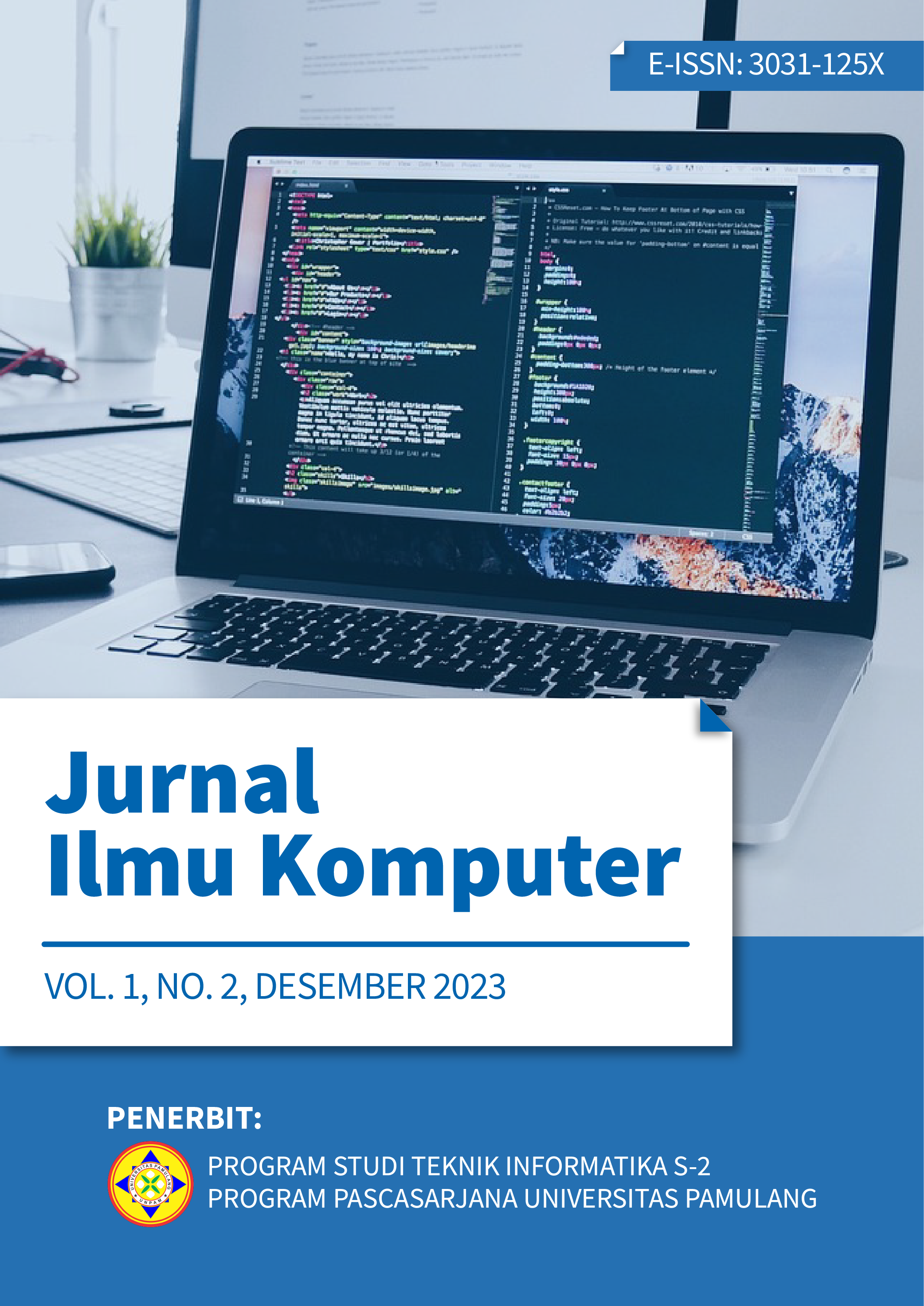Prediksi Inflow Daerah Aliran Sungai Larona Dengan Model Seasonal Autoregressive Integrated Moving Average
Keywords:
Prediction, Inflow, Larona Watershed, SARIMA ModelAbstract
Larona Watershed (DAS) Inflow Prediction entering the reservoir has a very important role in managing the reservoir's water resources. Various approaches using mathematical models have been carried out, the results of which can be used as management tools to understand estimates and predictions of future inflow values, especially in the context of managing and planning water utilization for company needs at PT Vale Indonesia Tbk. The research aims to find a prediction model for the water inflow of the Towuti, Matano and Mahalona reservoirs. The research method uses a statistical approach using the SARIMA (Seasonal Autoregressive Integrated Moving Average) model. Research data, time series data, monthly inflow of the Larona watershed for January 2006 – December 2019. The research results showed that the best model was SARIMA (2,0,1)(0,1,1)12. The mathematical model prediction formulated is 4.786 + 1.459t-1 – 0.648t-2 – 0.714 e_(t-1). The model accuracy level was tested using the RMSE (Root Mean Squared Error) criteria of 0.767, MAE (Mean Absolute Error) level of 0.592, MAPE (Mean Absolute Percentage Error) of 14.58. To validate the predicted values, the F test, Siegel-Turkey, Bartlett, Levene was carried out at the α=5% level. The test results for the difference between actual and predicted values were concluded to accept the null hypothesis, which means that there is no significant difference between the actual data values and the predicted data values.
References
[1] A. P. Astuti, “Analisis prediksi jumlah wisatawan mancanegara yang masuk melalui pintu kedatangan entikong menggunakan metode sarima dengan software eviews,†2016.
[2] H. A. Maulana, M. Z. Sampe, and F. Hanifah, “Pemodelan dan Peramalan Deret Waktu Studi kasus : Suhu Permukaan Laut di Selatan Jawa Timur,†vol. 1, no. 2, pp. 187–199, 2017.
[3] D. dan A. E. Ruhiat, “Pengaruh faktor musiman pada pemodelan deret waktu untuk peramalan debit sungai dengan metode sarima,†vol. 2, no. 2, pp. 117–128, 2018.
[4] S. Kasus et al., “PERAMALAN CURAH HUJAN DENGAN PENDEKATAN SEASONAL AUTOREGRESSIVE INTEGRATED MOVING AVERAGE ( SARIMA ) RAINFALL FORECASTING USING SEASONAL AUTOREGRESSIVE INTEGRATED MOVING AVERAGE MODEL (SARIMA),†vol. 11, pp. 63–74, 2017.
[5] H. Liu et al., “Journal of Infection and Public Health Forecast of the trend in incidence of acute hemorrhagic conjunctivitis in China from 2011 – 2019 using the Seasonal Autoregressive Integrated Moving Average ( SARIMA ) and Exponential Smoothing ( ETS ) models,†J. Infect. Public Health, vol. 13, no. 2, pp. 287–294, 2020, doi: 10.1016/j.jiph.2019.12.008.
[6] K. Birhanu, T. Abcdef, M. Olumana, and D. Abcdef, “Application of SARIMA model to forecasting monthly flows in Waterval River , South Africa,†2017, doi: 10.1515/jwld-2017-0088.
[7] D. Syaifullah, “Karasteristik Curah Hujan Dan Aliran Das Larona Kabupaten Luwu Timur Sulawesi Selatan,†J. Sains Teknol. Modif. Cuaca, vol. 14, no. 2, p. 83, 2013, doi: 10.29122/jstmc.v14i2.2687.
[8] J. Farajzadeh, A. Fakheri Fard, and S. Lotfi, “Modeling of monthly rainfall and runoff of Urmia lake basin using ‘feed-forward neural network’ and ‘time series analysis’ model,†Water Resour. Ind., vol. 7–8, pp. 38–48, Sep. 2014, doi: 10.1016/j.wri.2014.10.003.
[9] T. Dimri, S. Ahmad, and M. Sharif, “Time series analysis of climate variables using seasonal ARIMA approach,†J. Earth Syst. Sci., vol. 129, no. 1, 2020, doi: 10.1007/s12040-020-01408-x.
[10] E. H. Etuk, S. Aboko, P. Harcourt, and P. Harcourt, “An additive seasonal Box-Jenkins model for Nigerian monthly savings deposit rates,†vol. 2, no. March, pp. 54–59, 2014.
[11] BPPT, “Monitoring TRMM untuk TMC DAS Larona (Sorowako),†BPPT, 2023.
[12] F. Prawaka, A. Zakaria, and S. Tugiono, “Analisis Data Curah Hujan yang Hilang Dengan Menggunakan Metode Normal Ratio , Inversed Square Distance , dan Rata-Rata Aljabar ( Studi Kasus Curah Hujan Beberapa Stasiun Hujan Daerah Bandar Lampung ),†vol. 4, no. 3, pp. 397–406, 2016.
[13] P. Chen, A. Niu, D. Liu, W. Jiang, and B. Ma, “Time Series Forecasting of Temperatures using SARIMA : An Example from Nanjing Time Series Forecasting of Temperatures using SARIMA : An Example from Nanjing,†2018, doi: 10.1088/1757-899X/394/5/052024.
[14] S. E. Sim, K. G. Tay, A. Huong, and W. K. Tiong, “Forecasting Electricity Consumption Using SARIMA Method in IBM SPSS Software,†vol. 6, pp. 103–114, 2019, doi: 10.13189/ujeee.2019.061614.
[15] J. Cong, M. Ren, S. Xie, and P. Wang, “Predicting seasonal influenza based on SARIMA model, in mainland China from 2005 to 2018,†Int. J. Environ. Res. Public Health, vol. 16, no. 23, 2019, doi: 10.3390/ijerph16234760.
[16] W. W. Winarno, Analisis Ekonometrika dan Statistika dengan Eviews, 4th Editio. Yogyakarta: UPP STIM YKPN, 2015.
[17] K. Hamidi, H. Sedghi, and A. Telvari, “Forecasting by Stochastic Models to Inflow of Karkheh Dam at,†vol. 3, no. 5, pp. 340–350, 2017.



